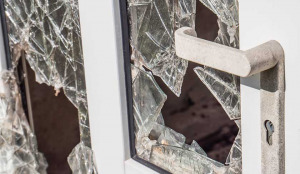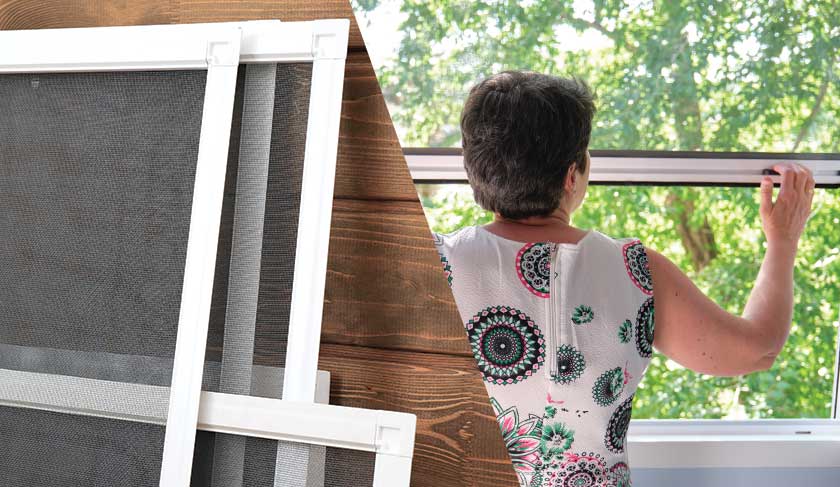
Keen to start upholstering, but feeling nervous about the whole thing? Don’t be! Start learning and doing with our fool-proof guide on how to upholster stools.
One of the first and easiest projects to take on is reupholstering a stool. It is virtually impossible to mess up, and only requires a few tools that most people already have lying around their homes.
Most people have an old stool lying around at home or a relatives place, or you can pick up a second-hand wooden stool for very cheap or free. In no time, you can quickly learn how to upholster stools, and turn your old worn-down stool into something new and modern.
What You’ll Need
- Stool in good condition – new or old (tips below)
- Upholstery fabric
- Upholstery foam (if the current foam is damaged or non-existent)
- Screwdriver
- Fabric shears
- Heavy-Duty Staple Gun
- Pencil
- Furniture Paint/Stain and Painting Tools
- Safety personal protective gear
While you’re first learning how to upholster stools, don’t be too picky about what upholstery fabric you choose. Just drop down to your local hobby and craft store that sells rolls of fabrics, and choose something that stands out to you.
Just make sure the fabric you choose is suitable for upholstery and furniture, since upholstery fabrics are thicker and tougher than most other types.
Here in Australia where I live, I go to Spotlight for cheap fabric supplies but in your country, there should be some other equivalent. You should be able to pick up upholstery foam from the same store too, if you need it.
If you need help choosing tools, have a look at our article on essential upholstery tools and supplies.
How to Upholster Stools
Preparing to Upholster the Stool
#1 Choosing the Stool
The first step in upholstering any piece of furniture is to first decide which piece of furniture to recover. Maybe you found a nice little stool at a yard sale, and want to make something unique out of it. Perhaps, you may already have several barstools lying around the house, and want to make them match the rest of the house.
Look for something that has a good quality, sturdy frame. After all, the only thing you really want to do is to replace the fabric and possibly the foam. You don’t want anything that will require the replacement of any damaged wood or metal. Simply put, find something that has old, worn down, damaged coverings.
You will probably find a wooden stool easier to work with, but if you only have a metal one that is ok too. The seat can be round or square for this project.
#2 Remove the Seat
After you have chosen the perfect stool for your project, it’s time to start disassembling it.
But first – take photos of it! No, not just so you can share before & after photos with your highly impressed friends, although that is also fun. The main reason for taking photos is so that if you have any questions about how to reupholster any bits, you can take a look at the photos to see how it was done originally. Take some wide shots as well as zoomed-in shots of any tricky-looking upholstered areas.
After you’ve taken photos, the next step is to unscrew the seat itself from the base. Keep in mind that not all stools have seats that can be removed. Don’t worry, if you have chosen a stool that has a seat that cannot be removed, it can still be restored.
In removing the seat, make sure to find a jar or bowl to place the screws into so that you can locate them later. The last thing you want to do is to put them somewhere and forget where they are. If this happens, you may need to go out and purchase replacement screws for the stool.
#3 Remove the Old Cover
The next step is to remove the old fabric from the seat. In most cases, the fabric is stretched over the foam and stapled underneath the seat. As long as the staples are not completely rusted, you should be able to slide a screwdriver underneath each staple and carefully pry it out. If the staple does not come out easily, you can also use a pair of side cutters to grab a hold of the staple wire and pull it out.
After the cover has been removed, if it is a one-piece cover, then try to lay it out flat so that you can later use it as a template. If the cover is composed of more than one piece of fabric, then you will need to later use a seam ripper, to separate the individual pieces. Once the cover itself has been removed, you should inspect the foam to make sure it is still good. If the foam has decomposed too much or is no longer able to retain its shape properly, then it should be replaced.
#4 Remove the Old Foam
In the event that the foam on the seat was damaged, or is no longer retaining its shape, you will need to replace it. You will probably note that the foam itself has been glued to the seat, and it will need to be scraped off. The spray-on adhesive can be quite difficult to remove so you may need to use a hair dryer to heat it up a bit. Make sure to remove all of the foam and adhesive from the seat before cutting and attaching a replacement.
#5 Paint the Base
If the stool you chose has a metal base, then you will need to start stripping it down and preparing it to be painted. This process starts by washing down the middle, roughing up the surface with some sandpaper, and if needed, removing any existing surface rust. From there, it can be primed and painted.
If the stool has a wooden base, then you’ll need to decide whether you are going to stain it or paint it. If you plan on painting it, then you will only need to rough up the surface with some sandpaper to remove any loose paint. Be careful when doing this, because if the existing paint is too rubbery, then you may need to remove it down to bare wood. If you plan on staining it, then you will need to take it down to bare wood anyways.
Related Article: How to Clean Furniture Before Painting & Refinishing
How to Upholster Stools – Reupholstering
#1 Replace the Foam
Measuring and cutting the foam
In order to cut the foam, the best tool is an electric carving knife. Chances are, you probably have one in your kitchen, that can be used to smoothly cut out the foam to shape. After procuring some good foam from your local arts and craft store, simply place it on the seat and trace it with a marker. Use an electric carving knife to cut a perfectly cylindrical cushion out of the foam. Once the replacement foam has been cut, you may want to bevel the edges slightly so that it will be easier to attach the new cover later.
Sticking on the foam
A can of spray-on adhesive will help you to attach the newly cut foam to the top of the seat. Coat the seat and the foam with an even spray. Wait until the adhesive begins to get tacky, then center the foam on the wood and press it down very lightly. You do not want to squish the foam because it may stretch too much.
Cutting Cushion Foam using Electric Kitchen Knife – View Video on YouTube
#2 Cut the Fabric
Now we need to cut the fabric to match the original seat cover. There are several different ways of doing this. The most obvious way is to lay the original cover down on top of the new fabric and trace it out. Another way of cutting the fabric is to place the seat of the stool on top of the new fabric and estimate the cut. The professional way of doing it is to first create a template using paper and the original cover, and then transferred that to the new fabric and cut it out.
One of the reasons why stools are simply so easy to upholster is that you do not have to be too accurate when it comes to a one-piece cover. Since the material itself will simply be pulled down over the foam and stapled underneath, the excess can always be cut off later. Stools that require a multiple-piece cover, can be a little more difficult. This is why it’s always best to make a template first, especially if you are planning on doing more stools later.
#3 Covering the Cushion
How to Cover a Round Bar Stool – View Video on YouTube
Once the fabric has been cut to shape, it’s time to cover the old cushion. If you are simply working with a one-piece cover, then lay the fabric down with the underside facing up, and then place the cushion on top of it. Center the cushion in the middle of the fabric, and then fold in each of the 4 opposite straight sides, leaving the corners for later.
Once the sides are stapled together, you can turn the seat over to check if everything is straight. Make sure that there are no wrinkles on the top side of the fabric before you flip it back over and start working your way around. Remember, stapling the corners is always the most difficult part because there will be a lot of excess material left over. As you work your way around, make sure to evenly and consistently pull the fabric tight before stapling it to the underside of the seat.
After you have completely secured the cover, flip the seatback over and verify that it has been pulled tight. Check to see if there are any wrinkles or loose areas, and if any are found, try to stretch the fabric out more in order to pull it taunt. Once you are satisfied with the end result, trim off any excess fabric leaving 1/2 to 3/4 of an inch.
#4 Bottom Cover
While some stools have a bottom cover, others do not. Even if your stool did not originally come with a bottom cover, in order to make the finished product look more professional, it’s always best to cut out a circular piece of fabric to fit underneath the seat. The purpose of this cover is to hide any staples and raw edges.
Since we are trying to cover up the staples and raw edges, you can use just about any piece of fabric you want. It doesn’t need to be anything in particular, because it will generally not be seen. In order to fit the bottom cover, simply place the seat on top of the fabric of your choice, and trace around the seat to create a circle. When you cut out the circle from the fabric, make sure to cut inside of the line by about 1/2 an inch. Using finer staples, staple the cover to the bottom side of the seat.
#5 Put It Back Together
The last step of the process is to put everything back together the way it was, which in this case means re-attaching the legs to the stool seat you just upholstered. Before you began taking it apart, you should have taken plenty of photos of the original stool, to make sure that you can put it back together properly. You should have also set aside the original screws so that you could find them later. If you prepare for the reassembly process accordingly, the stool should go back together easily.
Final Thoughts on How to Upholster Stools
There we have it, your first upholstery project done and dusted! As you can probably now see, a stool is quite an easy project to undertake.
Before you move onto any more advanced projects, you may like to try a few more stools to build your confidence. You could upholster an entire set of bar stools in the same fabric, upholster a selection of mismatched furniture in the same fabric for a quirky look, or do them all different. Whatever suits you.
When you feel ready, step it up, by learning how to upholster an office chair in this tutorial.
Author
-

Hey, I’m Sara, co-owner of NestKoo! I’m a graphic designer and professionally trained fine artist, with a Bachelor of Arts (Fine Art) majoring in Painting. I love being close to nature, sustainable living and bringing new life to old things. My specialty in NestKoo is DIY house painting, upholstery and furniture upcycling, where I bring my skills in fine art painting and contemporary design together into a practical home DIY context.
View all posts









